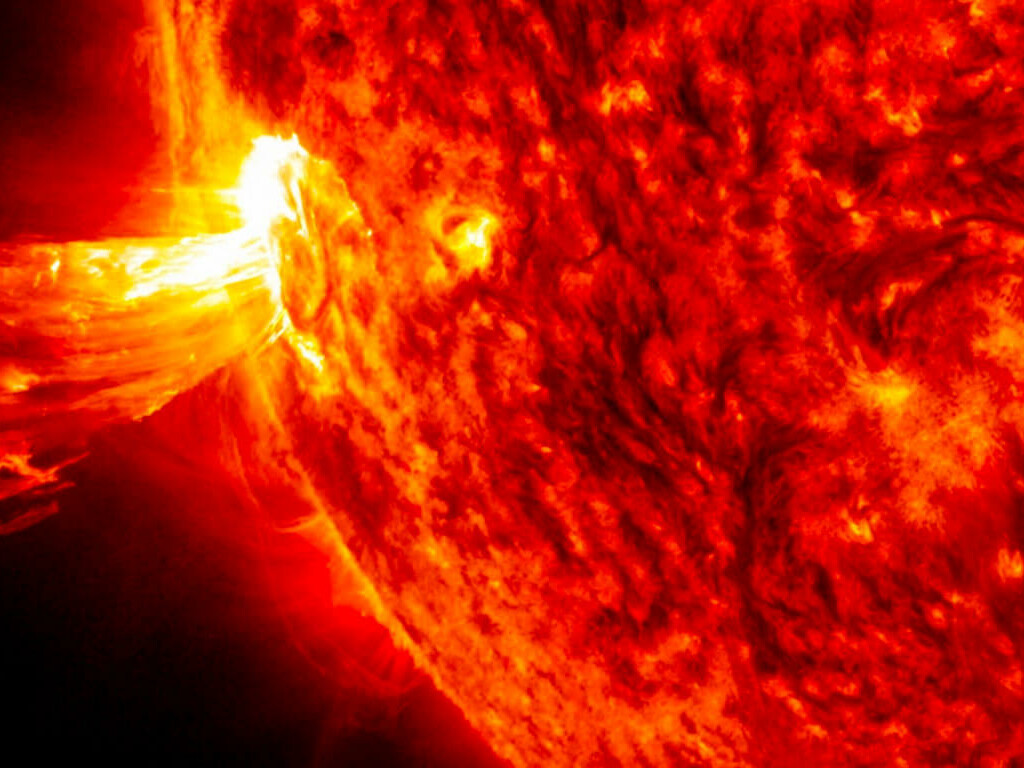A solar superstorm could leave you without internet and electricity for days. These astronomical phenomena have the power to cause massive failures in our technological networks. Learn how to prepare and protect your devices to minimize the impact of these catastrophic events.
Solar Superstorms: Threats and Preparation
A solar superstorm is a large-scale astronomical phenomenon that can have devastating effects on Earth. From communication failures to massive blackouts, these events remind us of the powerful influence the Sun has on our technology and daily lives.
What is a Solar Superstorm and How Would It Affect Us?
A solar superstorm is a massive eruption of solar energy, much more powerful than a typical solar storm. These storms originate from coronal mass ejections (CMEs), which are enormous clouds of charged particles released by the Sun. When these particles reach Earth, they can cause significant disturbances in the Earth’s magnetic field.
A notable example is the Carrington Event of 1859, the most powerful solar storm on record. This event caused auroras visible as far south as the Caribbean and caused failures in telegraph systems across Europe and North America. The history of the most powerful solar storms shows us the magnitude of these events and their possible consequences.
How Would a Solar Superstorm Affect Modern Technology?
The impact on modern technology can be devastating. Electrical grids are especially vulnerable. A CME can induce electrical currents on the Earth’s surface, overloading transformers and causing massive blackouts. An example is the Quebec blackout in 1989, caused by a severe geomagnetic storm.
Additionally, satellite communications and GPS systems can be severely affected. Energetic particles from a superstorm can damage satellites, disrupting communication and navigation signals. Additionally, it affects undersea internet cables, which are essential for global connectivity.
The consequences for global infrastructure are equally concerning. Internet cables, satellites and electrical transformers could suffer irreparable damage, causing prolonged interruptions to essential services. Preparation and resilience against these events are crucial to mitigating their devastating effects.
Prediction and Preparation for a Solar Superstorm
Predicting a solar superstorm is a complex challenge, but scientists have developed advanced methods to monitor space weather. They use technologies like the Advanced Composition Explorer (ACE), a satellite that detects coronal mass ejections (CMEs) and other solar activities.
However, the current system only provides warnings 15 minutes in advance, which is not sufficient for adequate preparation.
Scientific studies have identified patterns in tree rings and ice cores that indicate historical solar events. This data helps scientists understand the frequency and intensity of solar superstorms, improving future predictions.
As our understanding of these phenomena improves, so does our ability to anticipate and mitigate their effects.
Preparation Measures
Preparing for a solar superstorm is crucial to minimizing its impact. One of the main recommendations is to establish a Space Weather Board to oversee and coordinate responses to these events across different government departments.
On the other hand, it is essential to reinforce electrical grids and communication systems to withstand currents induced by a CME. This includes installing resilient transformers and creating decentralized infrastructures that can operate independently in case of a widespread failure.
Another key strategy is public education and awareness. Informing citizens about the risks and preparation measures can help reduce panic and increase community resilience. Due to all these challenges, it is important to promote research and development of technologies that can better predict and mitigate the effects of solar superstorms.
Preparing for a solar superstorm is not only the responsibility of governments and scientists; every individual can take measures to protect their electronic devices and be prepared for service interruptions. The combination of individual and collective efforts is essential to face this astronomical challenge.
Resilience Against Solar Superstorms
Solar superstorms represent a real and significant threat to our technology and daily lives. These events, although rare, can cause massive blackouts, communication failures and damage to essential infrastructures. History shows us examples like the Carrington Event of 1859, which highlight the magnitude of these phenomena.
Thanks to scientific and technological advances, we can now monitor space weather and anticipate possible events. However, it is vital that both governments and individuals take proactive measures to protect our electrical grids and communication systems.
Establishing a Space Weather Board, reinforcing infrastructures and educating the public are fundamental steps to increase our resilience against these events. By being better prepared, we can mitigate the devastating effects of a solar superstorm and ensure the continuity of essential services in our society.
Facing a solar superstorm requires preparation and awareness. Make sure to protect your devices and stay informed about prediction methods. Together, we can minimize the devastating effects and maintain the continuity of our essential services.





